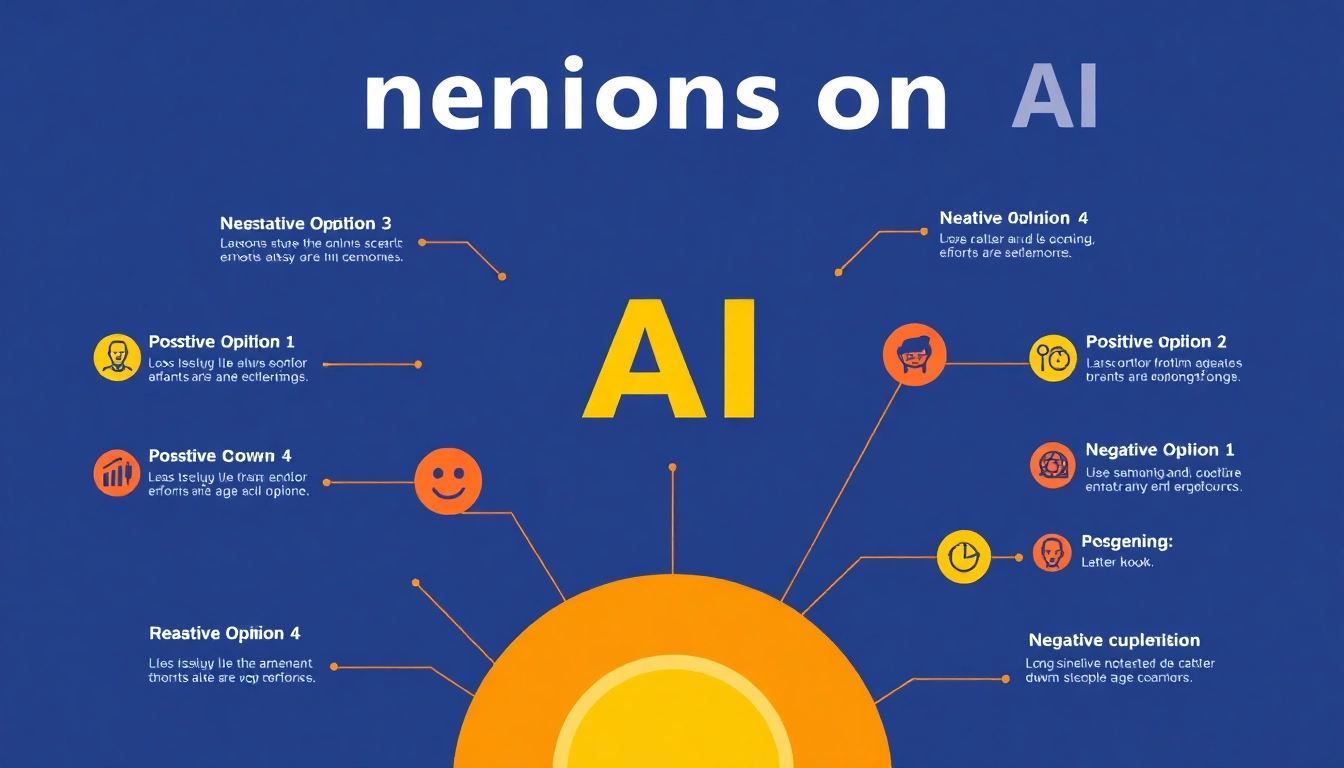Introduction to AI Opinion Polls
As artificial intelligence (AI) continues to influence various aspects of our daily lives, understanding public sentiment towards this evolving technology has become increasingly critical. AI Opinion polls serve as invaluable tools for gauging reactions and perceptions related to AI among diverse demographics. By analyzing these polls, stakeholders can better navigate the societal implications, benefit from user insights, and enhance product development in a way that aligns with public expectations.
What are AI Opinion Polls?
AI Opinion Polls are structured surveys designed to gather individuals’ perspectives on artificial intelligence. These polls can cover a vast range of topics, including public fears, excitement about AI advancements, ethical considerations, and perceived job impacts resulting from AI integrations. They allow researchers to collect quantifiable data reflecting diverse opinions, making it easier to identify trends, misconceptions, and the general attitude of different populations toward AI technologies.
The Importance of AI Opinion Polls
The significance of AI opinion polls cannot be overstated. They play a crucial role in shaping policies and practices by providing data-driven insights that inform decision-makers in government, corporations, and non-profit organizations. By capturing the sentiments of the public, these polls direct attention to societal concerns that warrant further examination and action. Additionally, they serve to educate and inform the public discourse surrounding AI, fostering an environment where technology can develop alongside its ethical implications.
Key Trends in Public Perception
In recent months, several trends in public opinion regarding AI have emerged. A report by Pew Research highlights that as of November 2023, 52% of Americans express more concern than excitement about AI, demonstrating a clear apprehension regarding the technology’s implications in daily life. Conversely, only 10% report feeling more excited than concerned. This duality of feelings reflects the growing consciousness around the potential benefits and risks associated with AI.
Understanding Public Concerns About AI
Common Misconceptions About AI
Misconceptions about AI abound, often driven by media portrayals and a lack of understanding among the general public. A prevalent myth suggests that AI will replace human jobs wholesale, creating widespread unemployment. While automation does impact job markets, it also generates new opportunities and roles that focus on human-AI collaboration. Another misconception relates to the belief that AI systems possess autonomous decision-making abilities akin to human reasoning. In reality, AI systems operate based on algorithms and datasets crafted by humans, lacking true understanding from a moral or emotional standpoint.
Impact of AI on Jobs and Industry
The integration of AI into various industries has generated a spectrum of opinions about job security. Reports from Gallup reveal that many U.S. adults believe AI will cause job losses across sectors, reinforcing fears about economic instability. Yet, the reality shows that AI can augment human capabilities, improve efficiency, and even create new job categories focused on AI literacy and development. Many industries, such as healthcare and education, are already witnessing transformative changes caused by AI applications, which promote a more collaborative work future.
Societal Implications of AI Integration
The growing integration of AI technologies raises significant concerns about ethical issues, privacy, and social bias. Important considerations include the potential for AI to exacerbate inequality if access remains limited to certain demographics. Furthermore, AI systems can perpetuate existing societal biases if their foundational data is flawed. Surveys indicate that 41% of Americans worry that AI does more harm than good in safeguarding personal information, revealing a need for transparent regulations and ethical standards in AI deployment.
Analyzing Recent AI Opinion Poll Data
Key Findings from Recent Surveys
Polls from reputable organizations such as YouGov and Gallup have uncovered intriguing insights into public sentiment towards AI. A recent survey noted that 72% of respondents expressed discomfort about the role of AI in spreading misinformation. As AI continues to revolutionize information dissemination, the blend of fear and distrust about its capabilities is palpable, emphasizing the need for responsible AI implementation and enhanced education on its limitations.
Demographic Variations in Sentiment
Sentiment toward AI is not uniform; distinct demographic variations emerge across age, gender, and education levels. Findings show that women generally exhibit more skepticism towards AI’s integration compared to men. Additionally, younger individuals tend to express greater enthusiasm for AI’s potential, indicating diverse generational perspectives that policymakers and developers must acknowledge while building future projects.
Comparing US Opinions with Global Trends
When examining attitudes toward AI on a global scale, it becomes evident that opinions vary significantly across different countries. A global survey conducted by the Institute for Data and Society highlights that while many nations embrace AI innovations, concerns about privacy and security remain a universal theme. Comparatively, the U.S. displays a unique apprehension tied to job loss, underscoring the necessity for a nuanced approach considering both local and global contexts.
Methods for Conducting AI Opinion Polls
Best Practices for Poll Design
Designing effective AI opinion polls requires careful consideration of various factors, including question formulation, target demographic selection, and desired outcomes. A well-structured poll balances open-ended questions that allow for rich qualitative feedback with closed-ended questions that facilitate quantifiable analysis. Additionally, ensuring a diverse respondent pool mitigates biases and enhances the reliability of findings.
Effective Survey Distribution Channels
Selecting the right distribution channels is critical for reaching a broad audience. Online platforms, social media, and email campaigns are commonly used methods to disseminate polls effectively. Ensuring accessibility enhances participation; thus, poll designs should accommodate different devices and languages. Utilizing incentivization (such as gift cards or entry into a raffle) can also significantly increase response rates.
Analyzing Poll Results Effectively
Once data is collected, robust analysis is required to derive meaningful insights. Employing statistical software and methodologies can help identify trends and correlations within the responses. Data triangulation—cross-validating findings with other relevant studies or datasets—also enhances the credibility of the results, allowing organizations to make informed decisions based on comprehensive analysis.
The Future of AI in Public Discourse
Anticipating Changes in Public Attitudes
As AI technologies continue to evolve, public attitudes are likely to shift. Predictions suggest that as awareness and understanding increase, sentiments toward AI may grow more favorable, especially if benefits are tangible. Continuous education and transparent discussions regarding the safety and ethical implications of AI are vital for nurturing a trusting relationship between technology developers and users.
Role of Education in Shaping Opinions
Educational institutions and organizations have a substantial role to play in shaping the public’s perspective on AI. By incorporating AI literacy into curricula and promoting workshops, organizations can cultivate a better understanding of the technology’s functions and effects. Equipping individuals with the necessary knowledge empowers them to engage critically with AI developments and advocate for ethical implications in their implementation.
Advocating for Transparent AI Development
Transparency in AI development is essential for building public trust. Developers, policymakers, and researchers are encouraged to uphold ethical standards and communicate clearly about AI technologies. Implementing clear guidelines, fostering open debates, and soliciting public feedback throughout development stages can contribute to responsible AI innovations that address societal concerns while maximizing benefits.



